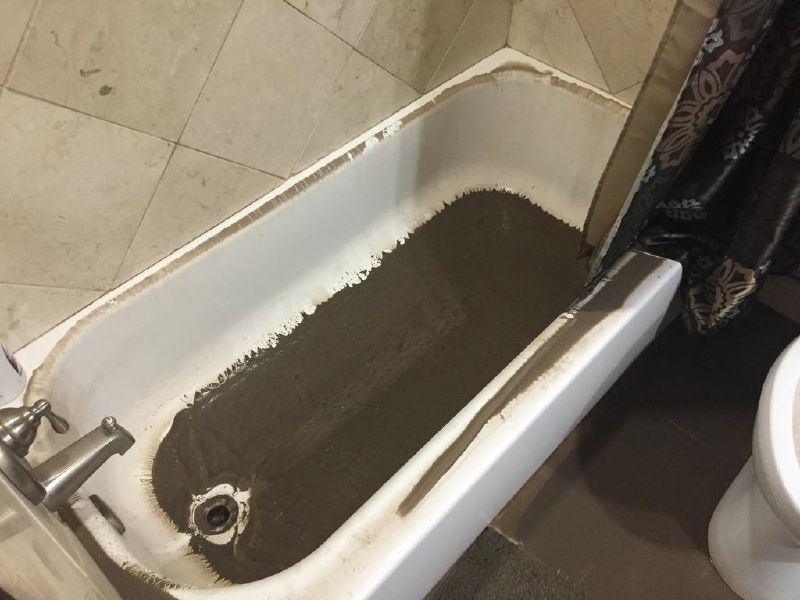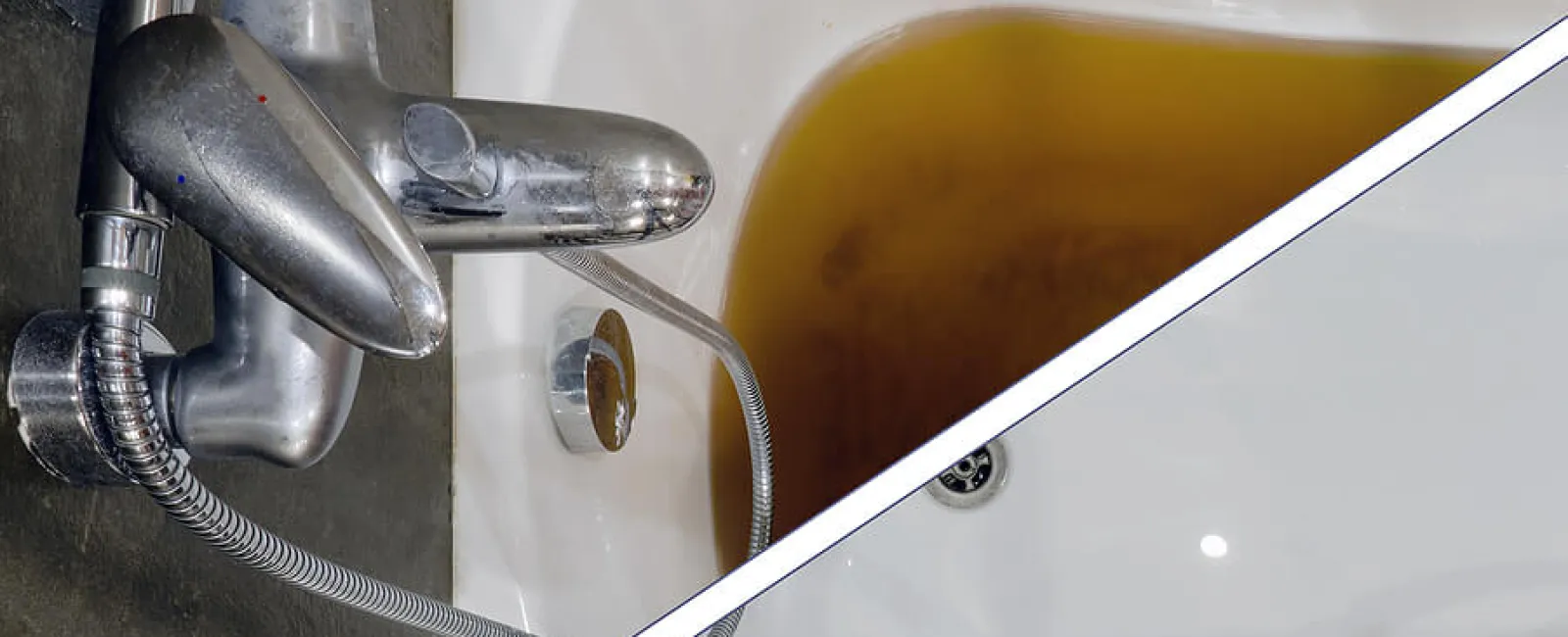Best Reasons Behind Discharge Backflow in the Bathtub
Best Reasons Behind Discharge Backflow in the Bathtub
Blog Article
We have stumbled upon this article involving What to Do if Sewage Starts Coming Up Through Your Bathtub directly below on the net and thought it made sense to share it with you on this site.

Sewage backup in the bathtub can be a distressing and unsanitary problem for any kind of property owner. Not just is it bothersome, however it additionally presents significant health dangers and shows underlying concerns with the plumbing system. Comprehending why sewer is turning up via the bathtub is important for taking suitable action to address the trouble properly.
Introduction to the Problem
Typical Reasons for Sewer Backup
Obstructions in the Drain Line
One of one of the most usual root causes of sewer backup is an obstruction in the sewage system line. This can occur as a result of the build-up of particles, grease, or international objects in the pipes, protecting against appropriate circulation and causing sewage to support right into your tub.
Tree Origin Intrusion
Tree origins looking for dampness and nutrients can infiltrate drain lines through little fractures or joints. Gradually, these roots can grow and increase, causing substantial damage to the pipes and bring about sewage back-up concerns.
Recognizing the Trouble
When sewer draws back up right into the tub, it's a clear indication of a problem with the water drainage system. The wastewater that should be flowing far from your home is instead locating its way back into your home, which can cause considerable damage and carcinogen.
Potential Reasons
Numerous elements can contribute to sewage backup in the tub. From clogs in the sewage system line to concerns with the plumbing framework, identifying the origin is essential for locating an option.
Aging Facilities
Older homes may have obsoleted plumbing systems that are extra at risk to deterioration, cracks, and degeneration. As pipelines age, they end up being a lot more prone to leaks and blockages, boosting the chance of sewage back-up cases.
Heavy Rainfall or Flooding
During periods of heavy rainfall or flooding, the sewer system may come to be overloaded with excess water, triggering backups and overflows. This can result in sewage supporting right into tubs and other fixtures inside the home.
Indications of Sewage Backup
Foul Odors
Unpleasant smells originating from drains or fixtures, specifically in the restroom, might show sewer back-up problems. These smells are commonly strong and persistent, signifying a problem that requires prompt focus.
Slow Draining Fixtures
Tubs, sinks, and commodes that drain pipes gradually or not in any way could be experiencing sewer back-up. If numerous fixtures are influenced all at once, it's likely that the issue originates from an usual point, such as the main sewage system line.
Gurgling Sounds
Unusual gurgling or bubbling sounds coming from drains pipes when water is running elsewhere in the house are a measure of air caught in the plumbing system. This air build-up can result from sewer backup and need to be examined promptly.
Health And Wellness Risks Connected With Sewage Back-up
Contamination of Water Supply
Sewage back-up can pollute the supply of water in your house, positioning a serious health and wellness threat to you and your family. Direct exposure to infected water can cause gastrointestinal problems, skin infections, and other health problems.
Mold and mildew Growth
Dampness from sewer back-up can develop suitable problems for mold development in your home. Mold spores can intensify breathing problems and trigger allergic reactions in sensitive people, making prompt cleaning important.
Spread of Illness
Sewer includes hazardous microorganisms, infections, and bloodsuckers that can create a range of conditions, consisting of liver disease, cholera, and gastroenteritis. Entering into contact with sewage or polluted surfaces places you in danger of infection.
Tidying up After Sewer Back-up
Disinfection Procedures
Completely disinfect and sterilize influenced areas after sewer back-up to get rid of damaging microorganisms and prevent mold growth. Use appropriate cleaning items and safety equipment to make certain secure and reliable cleanup.
Remediation of Influenced Locations
Fix any kind of damages to floor covering, wall surfaces, or components triggered by sewer back-up. Depending upon the extent of the damage, you might require to replace carpets, drywall, or various other materials to recover your home to its pre-loss problem.
Immediate Actions to Take
Switching Off Water
In case of sewage backup, it's essential to turn off the supply of water to prevent more contamination and damages. Situate the primary water shutoff valve in your house and closed it off till the problem can be solved.
Calling an Expert Plumber
Taking care of sewage back-up is not a DIY task. Contact a licensed plumber with experience in managing sewage-related issues to analyze the situation and perform required fixings or cleanups.
Avoiding Contact with Infected Water
Until the sewer back-up is solved, avoid contact with contaminated water to prevent the spread of microorganisms and virus. Use safety gear if you need to be in the affected location and clean your hands extensively later.
Safety nets
Routine Maintenance of Drain Lines
Schedule normal examinations and upkeep of your sewage system lines to identify and deal with potential concerns prior to they intensify into significant problems. This can include cleaning debris, evaluating for tree root intrusion, and repairing any damaged pipelines.
Setting Up Backwater Shutoffs
Take into consideration mounting backwater valves in your plumbing system to prevent sewage from flowing back into your home throughout durations of heavy rainfall or flooding. These valves immediately close when water starts backing up, safeguarding your home from contamination.
Correct Disposal of Family Waste
Avoid flushing anything aside from bathroom tissue and human waste down the toilet to stop obstructions and clogs in the sewage system line. Dispose of grease, oil, and various other family chemicals effectively to decrease the risk of plumbing problems.
Why Is Water Backing Up in My Bathtub When I Flush My Toilet?
What to do about a sewer line clog
First, don’t bother with plunging. No amount of plunging will dislodge the clog in a sewer line. The clog is too far away. Plungers are for clogs in the toilet itself, not the sewer line. Plus, the most likely causes of a sewer clog are:
Tree roots Flushed toys or feminine products Grease buildup Those items don’t move easily. And in the case of tree roots, the roots need to be cut out of the pipe and the pipe will need to be repaired.
You’ll need a closet auger. A closet auger is a type of plumber’s snake with a protective cover to keep from scratching the delicate porcelain toilet. If the clog is further down, you may need to remove the toilet or use one of your cleanouts to get to the clog.
We also recommend doing a video inspection of the drain to ensure that the cause of the clog has been completely removed. Otherwise, you could have the same problem again in a few days or weeks.
https://mspplumbingheatingair.com/blog/why-is-water-backing-up-in-my-bathtub-when-i-flush-my-toilet

As a reader about What To Do If Sewage Starts Backing Up Into the Shower, I imagined sharing that excerpt was a good idea. For those who enjoyed our post if you please be sure to share it. I praise you for being here. Don't forget to visit our site back soon.
Information
Report this page